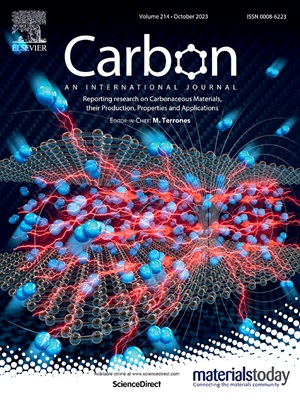Electronegative interface modification enables accelerated interfacial kinetics for lithium-ion battery anodes
IF 11.6
2区 材料科学
Q1 CHEMISTRY, PHYSICAL
引用次数: 0
Abstract
The mainstream graphite anode in lithium batteries encounters obstacles including the capacity reduction and polarization during fast-charging, which is mainly restricted by the sluggish ion transfer kinetics. Here, a universal electronegative interfacial modification strategy is proposed for improving the fast-charging performance of the graphite (Gr) anode, in which the electronegative –COOH groups on the graphite/electrolyte interface serve as a Li+ reservoir by the pre-adsorption of a large amount of Li+ through electrostatic interaction. The electron-rich interface and the enrichment of Li+ at the interface weaken the Li+-solvent interaction and provide a larger Li+ potential difference, thereby accelerating desolvation process and inducing the formation of inorganic-rich SEI. Therefore, the interfacial kinetics of the graphite anode was enhanced substantially by the weakened Li+-solvent interaction and LiF-rich SEI interface. As a result, the Gr@rGO anode with optimized –COOH groups and appropriate defects achieved a great rate performance of 192 mAh g−1 at 4C, small polarization of 0.026 V, and excellent cycling stability with 97 % after 600 cycles in pouch cells. In addition, universal application of –COOH modified interphase for fast-charging performance in high-energy-density anode systems, including SiO and nano-silicon anodes, was proved to be feasible, revealing the effectiveness of the electronegative regulation for fast-charging lithium-ion battery anodes.

电负性界面修饰可以加速锂离子电池阳极的界面动力学
锂电池的主流石墨阳极在快速充电过程中会遇到容量下降和极化等障碍,这主要受到离子传递动力学缓慢的制约。为了提高石墨(Gr)阳极的快速充电性能,本文提出了一种通用的电负性界面修饰策略,即石墨/电解质界面上的电负性-COOH基团通过静电相互作用预吸附大量的Li+,充当Li+的储层。富电子界面和界面处Li+的富集削弱了Li+与溶剂的相互作用,提供了更大的Li+电位差,从而加速了脱溶过程,诱导富无机SEI的形成。因此,减弱的Li+-溶剂相互作用和富liff的SEI界面大大增强了石墨阳极的界面动力学。结果表明,优化后的-COOH基团和适当缺陷的Gr@rGO阳极在4℃时具有192 mAh g−1的高倍率性能,极化率仅为0.026 V,在袋状电池中循环600次后的循环稳定性为97%。此外,证明了-COOH修饰界面相在高能量密度阳极体系(包括SiO和纳米硅阳极)中快速充电性能的普遍应用是可行的,揭示了电负性调节对锂离子电池阳极快速充电的有效性。
本文章由计算机程序翻译,如有差异,请以英文原文为准。
求助全文
约1分钟内获得全文
求助全文
来源期刊

Carbon
工程技术-材料科学:综合
CiteScore
20.80
自引率
7.30%
发文量
0
审稿时长
23 days
期刊介绍:
The journal Carbon is an international multidisciplinary forum for communicating scientific advances in the field of carbon materials. It reports new findings related to the formation, structure, properties, behaviors, and technological applications of carbons. Carbons are a broad class of ordered or disordered solid phases composed primarily of elemental carbon, including but not limited to carbon black, carbon fibers and filaments, carbon nanotubes, diamond and diamond-like carbon, fullerenes, glassy carbon, graphite, graphene, graphene-oxide, porous carbons, pyrolytic carbon, and other sp2 and non-sp2 hybridized carbon systems. Carbon is the companion title to the open access journal Carbon Trends. Relevant application areas for carbon materials include biology and medicine, catalysis, electronic, optoelectronic, spintronic, high-frequency, and photonic devices, energy storage and conversion systems, environmental applications and water treatment, smart materials and systems, and structural and thermal applications.
 求助内容:
求助内容: 应助结果提醒方式:
应助结果提醒方式:


